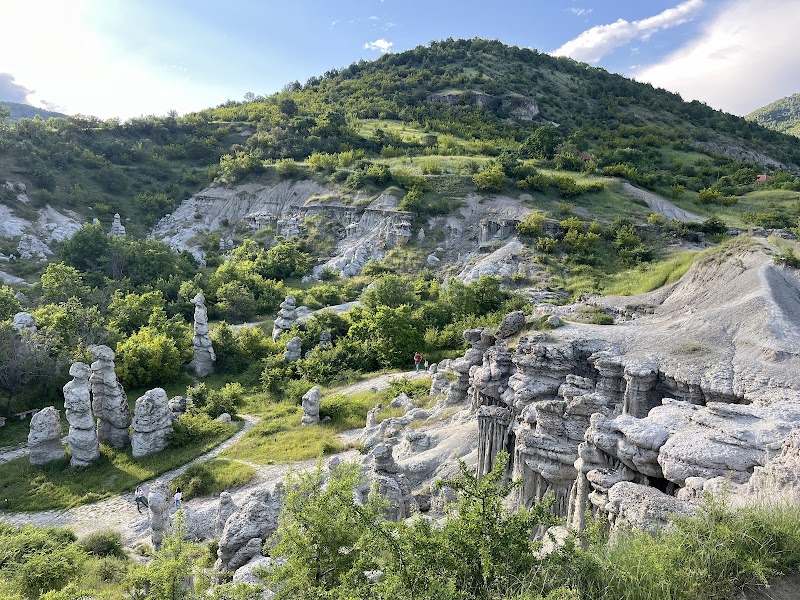
The Kratovo Cultural Summer Festival transforms a historic North Macedonian town into a lively hub of music, art, and tradition every summer. Combining outdoor adventure with rich cultural experiences, it offers visitors an immersive, active way to engage with both nature and heritage.
Start Early to Beat the Heat
Temperatures rise quickly in mid-summer; beginning hikes or exploration early morning helps maintain energy and enjoy cooler conditions.
Wear Durable Footwear
Paths around Kratovo have uneven volcanic rock and cobblestone streets requiring sturdy, grip-friendly shoes to prevent slips and fatigue.
Hydration is Key
Carry at least 2 liters of water per person, especially since water refill points are sparse along hiking routes and festival venues.
Cash is King
While the town is small, many vendors and guesthouses accept cash only. Have local currency accessible for smooth transactions during the festival.
Experience the Kratovo Cultural Summer Festival: A Fusion of History, Art, and Adventure
Each summer, the town of Kratovo in North Macedonia wakes from its quiet rhythm to become a vibrant stage for the Kratovo Cultural Summer Festival. This event blends local tradition with contemporary creativity, inviting visitors to explore not just the festival but the historic lanes and rugged landscapes that frame it. The cobbled streets and stone bridges, sharp angles of Ottoman-era architecture, and volcanic formations surrounding Kratovo set a vivid backdrop that feels alive and fiercely real.
The festival runs through July and August, spotlighting music, theater, visual art, and folklore. Performances unfold in unexpected venues—courtyards, open squares, and even abandoned towers—turning the town itself into a dynamic playground. The air is thick with the scent of grilled local cuisine and the hum of excited voices sharing stories both old and new.
Visiting Kratovo for the festival means more than attending shows. It’s about moving through spaces sculpted by centuries of miners, artisans, and storytellers. Outdoor enthusiasts will find hiking paths starting at the town’s edge that skirt volcanic shafts and forests. Trails range from 4 to 10 kilometers with moderate elevation changes, offering panoramic views of the Kratovo valley that reward every step. These hikes are accessible to casual walkers, but the uneven terrain asks for sturdy footwear and a steady pace.
The natural surroundings respond to you: the trees whisper encouragement, the wind pushes your resolve, and the sun tracks your progress as you ascend. Bring at least 2 liters of water and set off early to avoid the afternoon heat. Evening events open a different sensory world when lanterns flicker on, blending with the town’s ancient stone and the warm voices of performers.
Practical planning at the festival doesn’t stop at performances and paths. Accommodation options are compact guesthouses within walking distance of all activities—ideal for flexible scheduling. Local food markets offer fresh fare to fuel your days, but also provide a chance to engage with vendors who recount the festival’s history and character.
The Kratovo Cultural Summer Festival is both a cultural immersion and an active discovery. It challenges visitors to go beyond the surface and appreciate a place fiercely itself—both grounded in its past and celebrating its present. Whether you attend for the art, the landscapes, or the chance to weave your own story into the town, it demands preparation, respect, and curiosity. Pack well, plan wisely, and step into a summer experience that pulses with life and authenticity.
Nearby Trips
All Adventures
Boat Charters
Water Activities
Adventures near Kratovo, North Macedonia
Discover the unique and memorable adventures that make Kratovo, North Macedonia special.
Frequently Asked Questions
What makes Kratovo Cultural Summer Festival unique compared to other regional festivals?
The festival actively integrates the town’s historic spaces into its performances, using architectural features as stages. This connection of place and art creates an immersive experience that goes beyond traditional venue setups.
Are there any lesser-known hiking spots near Kratovo often missed by tourists?
Yes, the volcanic crater rim trails on the outskirts provide quiet escapes with breathtaking views and fewer visitors, perfect for those wanting solitude and raw nature.
What local wildlife might visitors encounter during their hikes?
Expect to see European green lizards basking on rocks, various songbirds like the common nightingale, and occasionally, fishermen’s bats in the evening near water sources.
Is the festival family-friendly?
Absolutely. Many events are designed for all ages, and the town itself is easy to navigate with kids, though parents should supervise while hiking on steeper trails.
How does Kratovo preserve its natural and historical environment during the festival?
Organizers work with local conservation groups to limit environmental impact, using established trails, minimizing waste, and promoting responsible tourism through education programs.
When is the best time of day for photography during the festival?
Early mornings offer soft golden light on the town’s stone structures, while evenings during performances feature dynamic lighting and lively crowds, ideal for capturing festival energy.
Recommended Gear
Hiking Shoes with Good Traction
Protect your feet and improve stability on volcanic rocks and cobblestones throughout trails and town paths.
Hydration Pack or Water Bottle
Maintain hydration in the summer heat, especially while hiking or attending outdoor events.
Light Layered Clothing
Adapt to changing temperatures between mornings, afternoons, and cool evenings.
Portable Charger
Ensure your devices stay powered for navigation, photos, and festival schedules.
Local Insights
Hidden Gems
- "Stone bridges aside the River Kratovska with photogenic moss-covered surfaces"
- "Abandoned medieval towers used as performance venues during the festival"
Wildlife
- "European green lizards"
- "Common nightingale"
- "Fishermen's bats"
History
"Kratovo’s history runs deep as one of the oldest mining towns in the Balkans, with Ottoman and medieval remnants influencing the town’s layered cultural identity reflected vividly during the festival."
